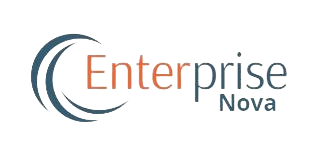The future of the internet is unfolding before our eyes and it is called Web 3.0. Valued at around USD 3.2 billion in 2024, the Web 3.0 market is projected to skyrocket to nearly USD 49.1 billion by 2034, growing at an astonishing 31.8% CAGR. This rapid rise is sparking global excitement, drawing in developers, investors, and everyday users eager to be part of the next big digital revolution.
What makes Web 3.0 so compelling is not just its growth, but its promise: a decentralized internet that gives power back to users. Unlike Web 2.0, where major platforms control data, Web 3.0 uses blockchain, smart contracts, and peer-to-peer systems to enable transparency, privacy, and true digital ownership. From DeFi (decentralized finance) to NFTs and tokenized economies, this shift is opening new opportunities for innovation, income, and independence online.
So, how do you actually start? Let us break it down.
Understanding What Web 3.0 Really Is
Before diving in, it is important to understand what Web 3.0 stands for.
At its core, Web 3.0 is about decentralization which replaces centralized platforms (like banks, social networks, or cloud servers) with peer-to-peer networks powered by blockchain technology. It uses smart contracts (self-executing programs that run on a blockchain), cryptocurrencies for transactions, and decentralized apps (dApps) for services.
In other words, Web 3.0 represents a shift from platforms owned by corporations to ecosystems owned and governed by communities, where users control their data, identity, and assets.
Step 1: Learn the Basics of Web 3.0
If you are new to this space, start with the fundamentals.
Learn how blockchain works: how it stores data, what “decentralized” means, and why it is considered more secure. Platforms like Coursera, Blockchain Council, and Alchemy University offer beginner-friendly courses.
You will also need to understand:
- What are smart contracts and how do they automate transactions?
- What are cryptocurrencies and tokens, and how are they used in decentralized ecosystems?
- What is the difference between Web 2.0 apps (like Facebook or PayPal) and Web 3.0 apps (like MetaMask or Uniswap)?
Once you understand the basics, you will have a foundation to decide which path suits you best.
Step 2: Choose Your Path in the Web3 Space
The great thing about Web 3.0 is that it is not just for coders.
Here are some popular Web3 career paths:
- Blockchain Developer: Build smart contracts and decentralized apps using languages like Solidity or Rust.
- Data Analyst / Scientist: Analyze blockchain data to find trends and insights for crypto firms or DeFi projects.
- Web3 Product Manager: Guide the development of decentralized products and ecosystems.
- Community Manager: Build and grow engaged Web3 communities across Discord and Telegram.
- Content Creator / Marketer: Simplify complex Web3 concepts for audiences through writing, videos, or infographics.
Pick a role that aligns with your strengths. For example, if you are analytical, start in blockchain data analytics. If you are creative, you might explore NFT marketing or UX design for dApps.
Step 3: Build Hands-On Experience
The best way to learn Web3 is to build.
Start small: join hackathons, explore open-source projects, and experiment on testnets (blockchain networks that use fake tokens for learning).
For instance:
- Create a basic NFT or token on Ethereum using tutorials from OpenZeppelin.
- Join Web3 developer communities on Discord or GitHub.
- Contribute to a decentralized project; even small documentation or testing work helps.
Web3 rewards people who take initiative and show curiosity. Employers often value real contributions over formal credentials.
Step 4: Build Your Portfolio and Network
Show your progress publicly. Create a simple portfolio website showcasing your projects, code, dashboards, or case studies. Include any GitHub repos, blog posts, or hackathon entries you have worked on.
Networking is also key. Join LinkedIn groups, Twitter (X) spaces, and Telegram communities focused on Web3. Many projects post job opportunities, collaboration calls, or funding programs directly in these spaces.
According to Medium, most Web3 careers grow through community involvement, the more visible and active you are, the faster you will learn and connect with opportunities.
Step 5: Keep Learning and Adapting
Web3 evolves fast. Today’s tools might look different next year, so continuous learning is essential.
Common Challenges to Expect
Getting into Web3 can be exciting, but it also comes with challenges:
- Steep learning curve: The technology is complex and still developing.
- Regulatory uncertainty: Governments are still defining rules around cryptocurrencies and decentralized systems.
- Security risks: Bugs in smart contracts can cause real financial losses.
Do not be discouraged, even experts are constantly learning. Take it one step at a time.
Conclusion
Breaking into Web 3.0 is not about having a tech degree or crypto background, it is about curiosity, consistency, and community.
Start by learning the basics, experiment with small projects, share your progress, and surround yourself with others in the space. Over time, your skills and network will grow, opening doors to exciting opportunities in blockchain development, DeFi, NFTs, and beyond.
The future of the internet is being built right now and with the right effort, you can be part of it.

